|
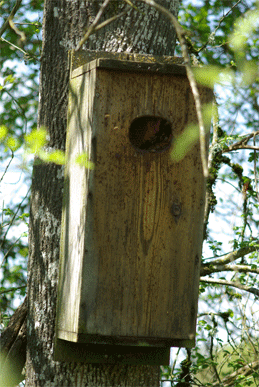
Wild bee hive living in a Wood Duck nest box at Fernhill Wetlands in
Forest Grove, Oregon. |
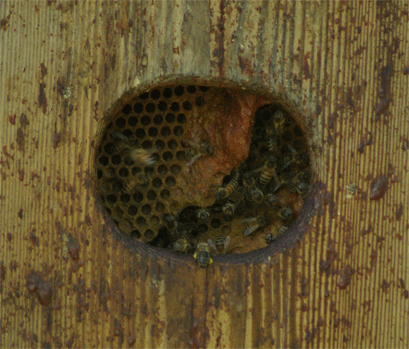
Close-up of hive entrance to the Wood-duck nest box. My son, Lucas
discovered this wild hive in March 2008 while we were watching birds in
the area. |
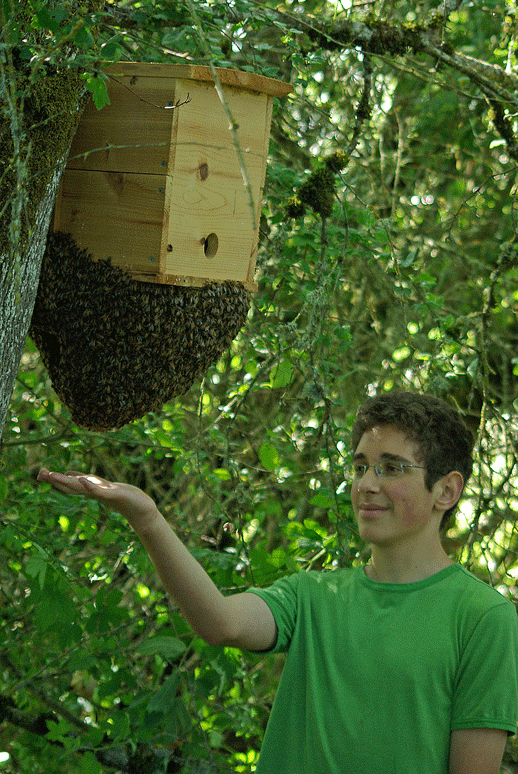 Two
sides and the bottom of this box are made of cedar. I'm beginning to think
that bees do not like cedar because a second swarm also clustered on the
bottom of this same box, refusing to move in after hanging out several days.
With the box made of all pine we have not had this problem. The bees
just move in and take up house keeping. |
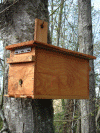
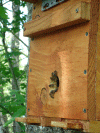
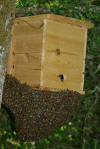
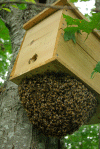
Honey Bee Swarm Capture BoxA new beekeeping project for us. Two
boxes were placed in the woods on our school campus and one at Fernhill
Wetlands where the old Wood Duck Box Hive had been. Both swarm boxes
on campus attracted the attention of foraging workers within days of
being set out (April 2010). By June 21, 2010 we caught our 4th swarm
using these capture boxes. Each box contained five frames with at
least one of the frames having drawn out wax comb. Lemon grass oil was
also placed in the box to attract bees.
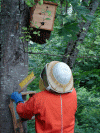
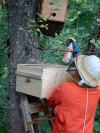
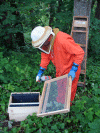
To collect this swarm I sprayed the bees with sugar water and then brushed
them into my swarm collection box. The collection box has a screened
bottom and top to provide plenty of ventilation during transport.

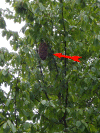
Swarm about 30-40 feet up in a tree at a student's home near the school.
This swarm stayed up in the tree for about ten days through cold rainy
weather (40 - 60F temp. range) before leaving. |
